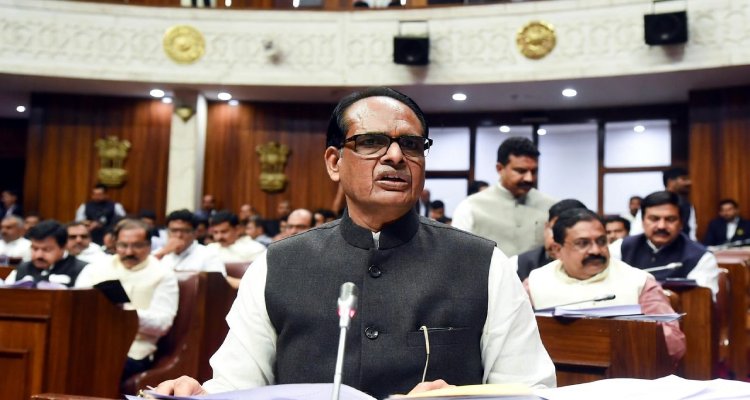India Semiconductor Mission Gains Momentum with Four New Projects Worth ₹4,600 Crore
India approves four new semiconductor projects worth ₹4,600 crore under the India Semiconductor Mission, aiming to boost domestic chip manufacturing and reduce import dependency.
New Delhi – In a significant push towards self-reliance in the high-tech sector, the Union Cabinet, chaired by Prime Minister Narendra Modi, has approved four additional semiconductor manufacturing projects under the India Semiconductor Mission (ISM). The projects, proposed by SiCSem, Continental Device India Private Limited (CDIL), 3D Glass Solutions Inc., and Advanced System in Package (ASIP) Technologies, collectively represent an investment of approximately ₹4,600 crore and are expected to generate over 2,000 direct skilled jobs.
These facilities will be spread across multiple states—Odisha, Punjab, and Andhra Pradesh—and are expected to further catalyze India’s growing electronics manufacturing ecosystem.
A Strategic Push to Reduce Import Dependence
India currently imports the vast majority of its semiconductor requirements, a dependency that has proven costly in recent years amid global supply chain disruptions. The COVID-19 pandemic and geopolitical tensions caused a semiconductor shortage that crippled industries worldwide, from automotive to healthcare technology.
In Europe, for example, the chip shortage led to a one-third drop in car production in 2021. The experience underscored the urgent need for countries to develop domestic semiconductor capabilities, especially as chips become even smaller and more complex—down to 2 nanometers—and demand continues to soar.
By approving these projects, the government aims to ensure that India’s growing electronics sector has a reliable domestic supply of chips, reducing the risk of production delays in critical sectors.
The New Projects: Who’s Doing What
- SiCSem (Odisha) – Specializing in silicon carbide semiconductors, which are highly efficient and crucial for electric vehicles and renewable energy systems.
- 3D Glass Solutions Inc. (Odisha) – Pioneering advanced semiconductor packaging that allows more chips to fit into smaller devices, essential as chip sizes continue to shrink.
- Continental Device India Private Limited – CDIL (Punjab) – One of India’s oldest semiconductor manufacturers, focusing on power devices and ICs for industrial and consumer electronics.
- Advanced System in Package Technologies – ASIP (Andhra Pradesh) – Developing integrated packaging systems that enhance chip performance and efficiency.
Together, these facilities will add high-value manufacturing capacity and create a network effect, supporting smaller suppliers, component makers, and service providers in the semiconductor supply chain.
India Semiconductor Mission: The Bigger Picture
Launched as part of the Semicon India Programme in December 2021, with an outlay of ₹76,000 crore, the India Semiconductor Mission serves as the nodal agency for implementing the country’s semiconductor and display ecosystem development plans.
Core Objectives of ISM:
- Develop a strong semiconductor manufacturing and design ecosystem in India.
- Encourage indigenous R&D and technology innovation.
- Foster collaboration between industry, academia, and research institutions.
- Promote skill development to build a world-class talent pool.
- Attract global and domestic investment in semiconductor technologies.
Focus Areas:
- Integrated Circuit (IC) design and manufacturing.
- Semiconductor packaging, assembly, and testing.
- Advanced materials and process technologies.
- Design automation tools and testing infrastructure.
- Skill and talent development initiatives.
Expert Insight
“Semiconductors are the new oil in the digital economy,” said Dr. Anil Gupta, a technology policy analyst. “Countries that control chip manufacturing will control the pace of innovation and the stability of their economies. India’s investment in semiconductor manufacturing is not just industrial policy—it’s strategic policy.”
Industry leaders agree that the government’s proactive investment and Make in India approach could position the country as a competitive player in the $1 trillion global semiconductor market projected for 2030.
Economic & Strategic Implications
With these new approvals, the total number of projects sanctioned under ISM has risen to 10, involving cumulative investments of about ₹1.60 lakh crore spread across six states.
The benefits are multifaceted:
- Economic Growth: Increased domestic manufacturing will keep more value within the country.
- Job Creation: Direct and indirect employment opportunities for engineers, technicians, and supply chain workers.
- Tech Sovereignty: Reduced dependency on a few global suppliers, especially amid geopolitical uncertainties.
- Global Integration: Strengthening India’s position in global electronics supply chains.
The Road Ahead
As chip sizes continue to shrink and demand for smarter, faster devices grows, technological innovation in packaging and design will be critical. The approved projects, especially those focusing on 3D glass packaging and advanced system-in-package technologies, are set to put India on the map for high-end semiconductor manufacturing.
The government’s next challenge will be to ensure these facilities are not only built quickly but also remain globally competitive in terms of technology, talent, and cost efficiency.
Conclusion
The approval of four new semiconductor projects marks another milestone in India’s quest to become a global electronics manufacturing hub. By focusing on innovation, domestic production, and talent development, the India Semiconductor Mission is not just about making chips—it’s about shaping the future of India’s digital economy.
Disclaimer: This article is based on official government announcements and verified industry data. Projections and expert insights are intended for informational purposes only.











